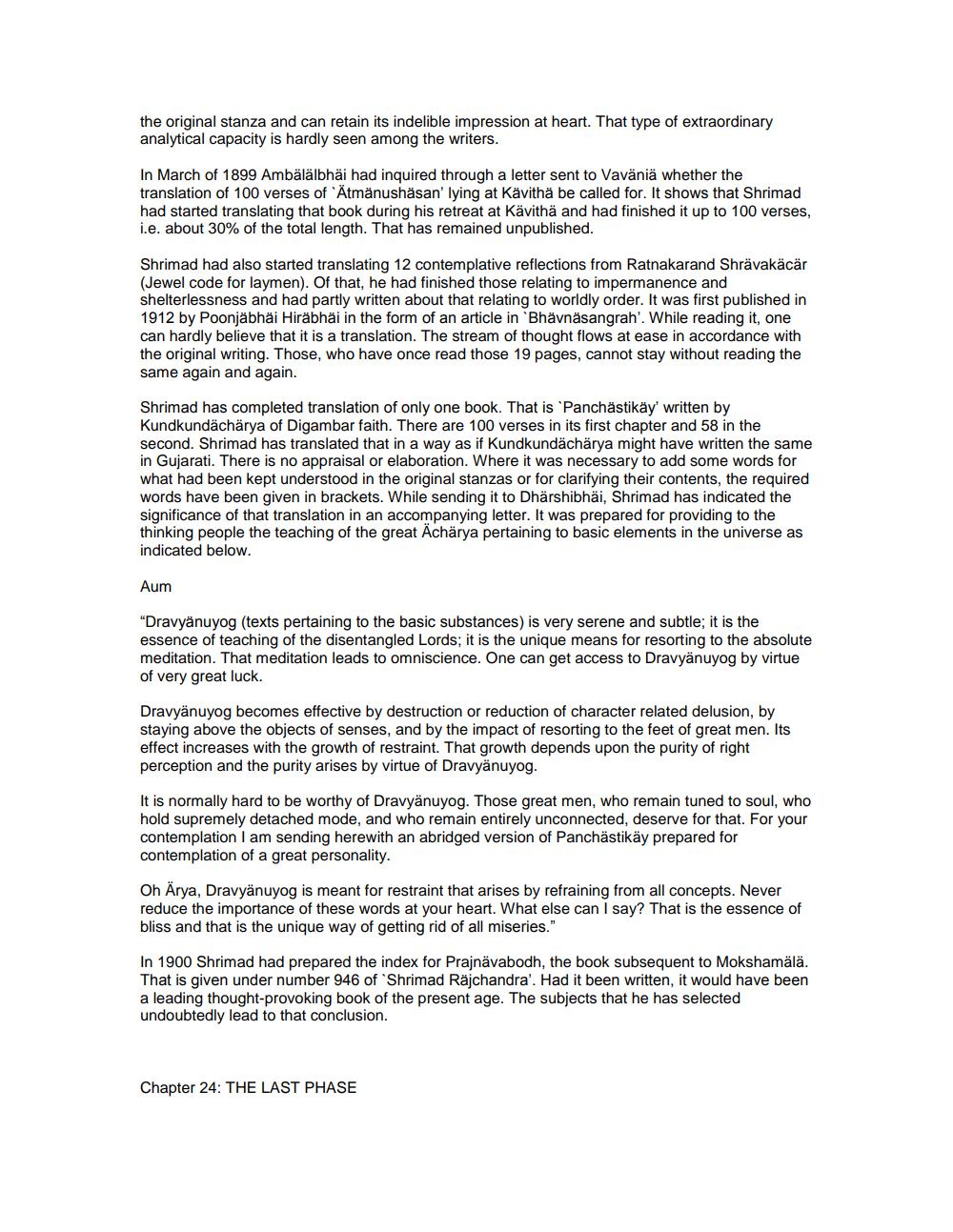________________
the original stanza and can retain its indelible impression at heart. That type of extraordinary analytical capacity is hardly seen among the writers.
In March of 1899 Ambälälbhäi had inquired through a letter sent to Vaväniä whether the translation of 100 verses of Atmänushäsan' lying at Kavitha be called for. It shows that Shrimad had started translating that book during his retreat at Kävitha and had finished it up to 100 verses, i.e. about 30% of the total length. That has remained unpublished.
Shrimad had also started translating 12 contemplative reflections from Ratnakarand Shrävakäcär (Jewel code for laymen). Of that, he had finished those relating to impermanence and shelterlessness and had partly written about that relating to worldly order. It was first published in 1912 by Poonjäbhai Hiräbhäi in the form of an article in 'Bhävnäsangrah'. While reading it, one can hardly believe that it is a translation. The stream of thought flows at ease in accordance with the original writing. Those, who have once read those 19 pages, cannot stay without reading the same again and again.
Shrimad has completed translation of only one book. That is "Panchästikäy' written by Kundkundächärya of Digambar faith. There are 100 verses in its first chapter and 58 in the second. Shrimad has translated that in a way as if Kundkundächärya might have written the same in Gujarati. There is no appraisal or elaboration. Where it was necessary to add some words for what had been kept understood in the original stanzas or for clarifying their contents, the required words have been given in brackets. While sending it to Dhärshibhäi, Shrimad has indicated the significance of that translation in an accompanying letter. It was prepared for providing to the thinking people the teaching of the great Acharya pertaining to basic elements in the universe as indicated below.
Aum
"Dravyänuyog (texts pertaining to the basic substances) is very serene and subtle; it is the essence of teaching of the disentangled Lords; it is the unique means for resorting to the absolute meditation. That meditation leads to omniscience. One can get access to Dravyänuyog by virtue of very great luck.
Dravyänuyog becomes effective by destruction or reduction of character related delusion, by staying above the objects of senses, and by the impact of resorting to the feet of great men. Its effect increases with the growth of restraint. That growth depends upon the purity of right perception and the purity arises by virtue of Dravyänuyog
It is normally hard to be worthy of Dravyänuyog. Those great men, who remain tuned to soul, who hold supremely detached mode, and who remain entirely unconnected, deserve for that. For your contemplation I am sending herewith an abridged version of Panchästikäy prepared for contemplation of a great personality.
Oh Arya, Dravyänuyog is meant for restraint that arises by refraining from all concepts. Never reduce the importance of these words at your heart. What else can I say? That is the essence of bliss and that is the unique way of getting rid of all miseries."
In 1900 Shrimad had prepared the index for Prajnävabodh, the book subsequent to Mokshamälä. That is given under number 946 of 'Shrimad Räjchandra'. Had it been written, it would have been a leading thought-provoking book of the present age. The subjects that he has selected undoubtedly lead to that conclusion.
Chapter 24: THE LAST PHASE




